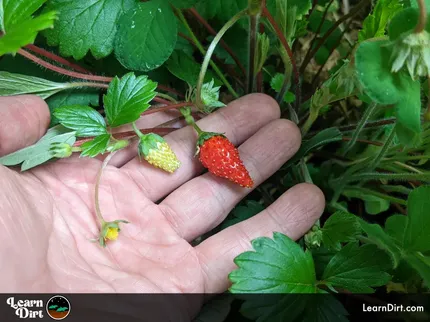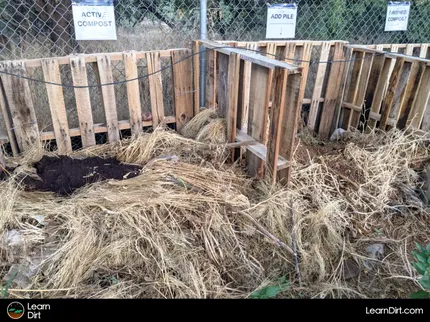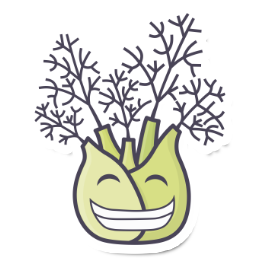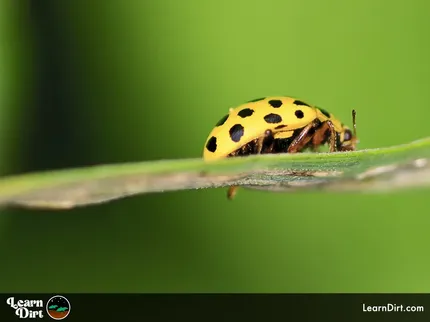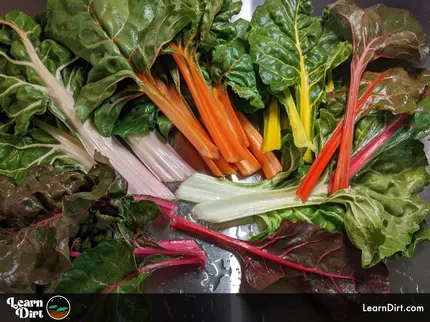Table of Contents
- The Flowering Process
- Safety Concerns For Flowered Veggies
- Can You Delay Plants From Flowering?
- What Plants Can You Still Eat After Bolting
- Uses for Bolted Plants
* Our articles never contain AI-generated slop *
Ever wonder whether you can still eat vegetables that are flowering? We'll talk about which veggies are still edible after bolting.
Many veggies need to flower in order to harvest their edible flowers or buds, such as broccoli, chamomile, or butterfly pea.
Others need to be allowed to fruit after flowering, so you can harvest the fruits - tomatoes, peppers, eggplants, or zucchinis are all examples of this.
Disclaimer: This post may contain affiliate links. Refer to the privacy policy for more information.
Today, though, we're looking at the plants which are primarily harvested as leafy greens, herbs, or roots prior to flowering and fruiting. The question at hand is: can you eat vegetables that are flowering?

The Flowering Process
When plants bolt to flower, they fundamentally change in a number of ways. Leaves can often become tough, fibrous, and bitter. Roots may become spongy and spicy.
Plants begin to produce different hormone profiles, and chemotoxin production increases.
Many plants become unrecognizable when flowering - often producing woody stalks to support the inflorescence (flowering heads and flower / seed production).
This push to flower signals the final lifecycle stages of plants before they store their genes as seeds which can weather the harshest conditions of the year before sprouting as new plants next year.
Tougher leaves help prevent animals and insects from stripping them off - a loss that is greater during flowering than during vegetative growth.
Join The Grower's Community
Looking for a place to meet growers,
ask questions, share knowledge, be heard,
and feel like you belong? 🌱
Check It Out!
Chemotoxin production ramps up as well, to ward off pests who would otherwise find flowering plants to be an easy meal. Strong flavors such as bitterness and spiciness are caused by these chemotoxins, and plants may become less palatable to humans as well.
To read all about what causes plants to bolt to flower, check out our Flowering Plant Guide.
Safety Concerns For Flowered Veggies
In some cases, chemotoxins can ramp up to levels which can cause varying degrees of safety concerns if ingested.
For example, rhubarb develops very high levels of oxalic acid when bolted which can be dangerous. It's best to avoid eating rhubarb stalks when the plant has bolted.
Parsnips can develop some toxic furanocoumarin compounds when it flowers, and you'd likely also find the root to be very tough and hard to eat if you tried.
There are quite a few more plants to be careful of once they've bolted, though you can usually tell that eating veggies becomes a problem when they turn very bitter, spicy, or overwhelming. Your tastebuds are a pretty good guide when flavors become less palatable after flowering.
Can You Delay Plants From Flowering?
Once a plant begins to bolt, flowering becomes inevitable as long as the plant lives long enough to accomplish it.
Flowering can be delayed for a short time, however, but not prevented.
Strip off all new buds and flowers as they appear to temporarily prevent flowering. This is commonly used on basil, and removing flowering heads can buy you an extra week or two to harvest all your leaves before the plant inevitably flowers and leaves become less palatable.
What Plants Can You Still Eat After Bolting
Safe to Eat Once Bolted
Most veggies are still perfectly safe to eat after bolding, though they generally become tougher and less tasty.
- Basil - less aromatic but safe; flowers are edible
- Beets - leaves remain safe though tough
- Bok Choy - becomes tough but safe to consume
- Broccoli - yellow flowers are edible and nutritious
- Cauliflower - remains safe though texture changes
- Chives - flowers are edible and often used as garnish
- Cilantro - changes to citrus notes but safe
- Dill - maintains safety; flowers add flavor to pickles
- Lettuce - becomes bitter but remains completely safe
- Mint - remains safe; flowers attract pollinators
- Oregano - flowers are edible and flavorful
- Sage - flowers are edible and decorative
- Spinach - develops bitter taste but no harmful compounds
- Swiss Chard - gets bitter but maintains food safety
- Thyme - flowering doesn't affect edibility

Safe in Moderation Once Bolted
In these plants you'll notice that bitter, strong, or spicy comounds increase to a level that will prevent you from eating a lot of them.
That's your clue to consume only in moderation (and probably not at all if you're very young, very old, sick, pregnant, or breastfeeding).
- Celery - elevated psoralen can cause skin sensitivity
- Napa - may develop intense bitter notes
- Collards - increased glucosinolates
- Fennel - can develop intense licorice compounds
- Kale - significant increase in bitter compounds
- Mustard Greens - higher glucosinolate levels
- Parsley - increases toxic compound concentration
- Radish - become very spicy and fibrous
- Turnip - may develop stronger bitter elements
- Watercress - significantly increased peppery compounds
Plants to Avoid Eating After Bolting
This is the danger zone. While it's still possible to consume smaller amounts of these plants after they bolt, do so at your own risk.
- Carrot Tops - can develop harmful alkaloids
- Chicory - may develop harmful bitter compounds
- Endive - can develop harmful compounds
- Parsnip - can develop toxic furanocoumarin compounds
- Radicchio - potentially toxic when fully bolted
- Rhubarb - oxalic acid levels become dangerous
- Sorrel - dangerous increase in oxalic acid
- Arugula - extremely high glucosinolates
Uses for Bolted Plants
Edible Flowers, Buds, and Pods
Pollinator Attractor
Seed Saving
Seed-saving is an easy practice to overlook, but if you plan to grow your garden year after year then saving seeds adapted in your garden is a great way to ensure plants thrive.
You can grow the same seeds out year after year, constantly collecting the seeds from the plants with your favorite qualities - slowly adapting varieties to your liking and microclimate over time.
You can also save yourself one of the biggest costs in gardening - buying seeds! Save your own so you don't need to buy so many new ones every year.
If you've let some plants bolt, consider allowing them to go all the way through flower, seed, and possibly drying and then collect the gold. Seeds are worth their weight in gold, and collecting as many of them as you can each year is a great way to keep a constant local seedstock that you love to grow.
Composting
Chop & Drop
Animal Feed
That's all for now, thanks for reading!
If you have any questions, comments, or would like to connect with fellow gardeners, head on over to the forum and post there.











